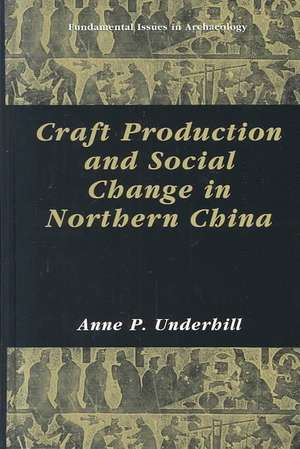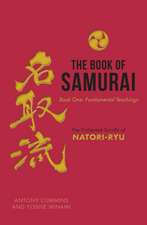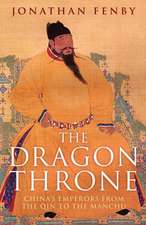Craft Production and Social Change in Northern China: Fundamental Issues in Archaeology
Autor Anne P. Underhillen Limba Engleză Hardback – 31 oct 2002
| Toate formatele și edițiile | Preț | Express |
|---|---|---|
| Paperback (1) | 1002.13 lei 6-8 săpt. | |
| Springer Us – oct 2012 | 1002.13 lei 6-8 săpt. | |
| Hardback (1) | 954.77 lei 6-8 săpt. | |
| Springer Us – 31 oct 2002 | 954.77 lei 6-8 săpt. |
Preț: 954.77 lei
Preț vechi: 1164.35 lei
-18% Nou
Puncte Express: 1432
Preț estimativ în valută:
182.75€ • 198.58$ • 153.61£
182.75€ • 198.58$ • 153.61£
Carte tipărită la comandă
Livrare economică 21 aprilie-05 mai
Preluare comenzi: 021 569.72.76
Specificații
ISBN-13: 9780306467714
ISBN-10: 0306467712
Pagini: 346
Ilustrații: XVI, 346 p.
Dimensiuni: 155 x 235 x 28 mm
Greutate: 0.71 kg
Ediția:2002
Editura: Springer Us
Colecția Springer
Seria Fundamental Issues in Archaeology
Locul publicării:New York, NY, United States
ISBN-10: 0306467712
Pagini: 346
Ilustrații: XVI, 346 p.
Dimensiuni: 155 x 235 x 28 mm
Greutate: 0.71 kg
Ediția:2002
Editura: Springer Us
Colecția Springer
Seria Fundamental Issues in Archaeology
Locul publicării:New York, NY, United States
Public țintă
ResearchCuprins
1. Craft Production and the Development of Complex Societies in Ancient China.- Prestige Goods and the Development of Complex Societies.- Reconsidering the Role of Prestige Goods in Social Change.- Change in Production and Use of Pottery Vessels as Complex Societies Develop.- Investigating Consumption of Pottery and Bronze Vessels in Northern China.- Methodological Approach.- Burials as Indicators of Changing Economic Relations.- The Plan of This Book.- 2. Sources of Data on Social Change during the Late Neolithic Period and Early Bronze Age.- The Yellow River Valley of Northern China.- Complex Societies during the Early Bronze Age.- Textual Data from the Shang Period, and the Importance of Descent Groups.- The Longshan Period (c. 2600–1900B.C.).- Longshan Economic Systems.- Concern for Ancestors.- The Late Yangshao Period (c. 4000–2800B.C.).- Late Yangshao Economic Systems.- The Dawenkou Period (c. 4100–2600B.C.).- Dawenkou Economic Systems.- 3. Food, Craft Production, and Social Inequality: Cross-Cultural Perspectives.- Integrative and Hierarchical Relations through Exchange of Food.- Variation in More Competitive Feasts.- Mortuary Feasts.- Giving Away Goods versus Burying Goods.- Exchange of Food Surplus for Craft Goods.- Summary of Expectations: Food, Craft Production, and Increase in Social Inequality.- 4. The Gift of Food in Ancient China: The Role of Food, Drink, and Containers in Social Relations.- Food, Containers, and Social Relations in China.- Mortuary Rituals in Late Historic and Modern China.- Early Historic China.- Texts from the Han and Eastern Zhou Periods.- Feasting and Political Relations.- Records from the Western Zhou Period.- Textual Data from the Shang Period.- Additional Expectations for the Late Neolithic Period and Early Bronze Age ofNorthern China.- 5. The Dawenkou and Yangshao Periods.- Ceramic Consumption during the Early Dawenkou Regional Phase (c. 4100–3500S.C.) in Western Shandong.- Inferences about Ceramic Production.- Ceramic Consumption during the Later Dawenkou Regional Phases in Western Shandong.- Inferences about Ceramic Production in Western Shandong.- Consumption Patterns for Eastern Shandong during the Late Dawenkou Phase.- Inferences about Ceramic Production in Eastern Shandong.- Patterns of Ceramic Consumption for Yangshao Sites and Inferences about Production.- Organization of Ceramic Production.- Nonceramic Prestige Goods in Dawenkou and Yangshao Period Graves.- House Remains from Dawenkou and Yangshao Sites.- Conclusions: Food, Craft Production, and Social Inequality.- 6. The Longshan Period.- Consumption of Ceramics from Graves in Western Shandong.- Inferences about Ceramic Production in Western Shandong.- Mortuary Ceramics in Eastern Shandong.- Inferences about Production in Eastern Shandong.- Mortuary Ceramics in the Central Yellow River Valley.- Assessing Ceramics from Habitation Contexts at Hougang and Baiying.- Assessment of Standardization.- Direct Evidence for Ceramic Production.- Consumption Patterns for Nonceramic Prestige Goods and Inferences about Production: Mortuary and Residential Remains.- House Remains from Longshan Sites.- Conclusions: Food, Craft Production, and Changing Social Relations.- 7. The Early Bronze Age.- Bronze Vessels in Graves and Inferences about Production: The Early-Middle Bronze Age.- Bronze Vessels in Graves from the Late Shang Period and Inferences about Production.- Large Bronze Vessels from Shang Sites.- Ceramic Vessels and Other Containers in Graves.- Other Bronze Items in Graves.- Jade Items in Graves.- Direct Evidence for BronzeProduction.- Direct Evidence for Ceramic Production at Early Bronze Age Sites.- The Political Economy of Early States in Northern China.- Remaining Questions about Regional Economic Organization.- Conclusions: Food, Craft Production, and Social Change.- 8. Craft Production and Social Change in Northern China.- The Dawenkou and Yangshao Periods.- The Longshan Period.- The Early Bronze Age.- Closing Thoughts.- Notes.- References.- Appendices.
Recenzii
"Underhill's monograph is the first diachronic archaeological study of this region from the anthropological perspective. This work will be of interest to students in Chinese archaeology,m as well as to archaeologists studying the rise of social complexity in other parts of the world."
(Journal of Anthrolopological Research, 59 (2003)
"...in this book, Anne Underhill has undertaken a massive investigation of the textual and archaeological evidence for changes in craft production in relation to the development of complex society between 4000 and 1200 B.C. in northern China. Probably the most meticulously systematic argument in the Chinese archaeological literature, where a rich array of Chinese historical and archaeological as well as worldwide ethnographical data are marshaled in its support."
(Gina L. Barnes, Asian Perspectives, 43:1)
(Journal of Anthrolopological Research, 59 (2003)
"...in this book, Anne Underhill has undertaken a massive investigation of the textual and archaeological evidence for changes in craft production in relation to the development of complex society between 4000 and 1200 B.C. in northern China. Probably the most meticulously systematic argument in the Chinese archaeological literature, where a rich array of Chinese historical and archaeological as well as worldwide ethnographical data are marshaled in its support."
(Gina L. Barnes, Asian Perspectives, 43:1)
Caracteristici
Provides an anthropological analysis of social and economic change during the late prehistoric and early historic period of Northern China Demonstrates that competition among descendant groups for economic and dealogical power caused diversification in the material culture Interprets material culture into the social changes of a complex society Includes supplementary material: sn.pub/extras























